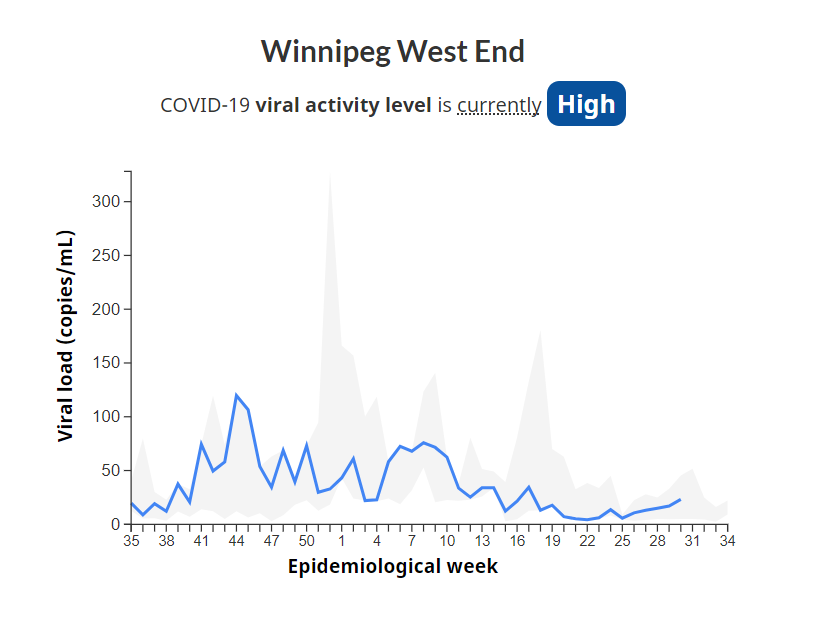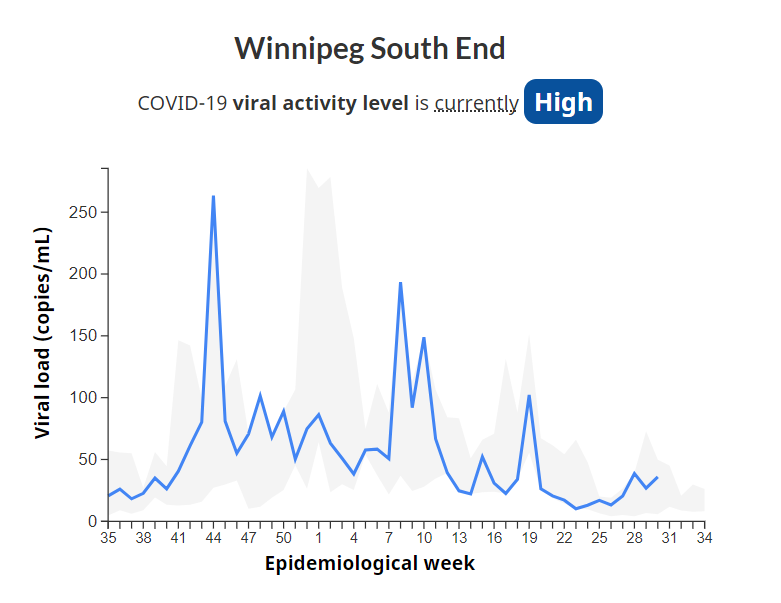High levels of COVID-19 in waste water, high temperatures driving Manitobans indoors and a low uptake for vaccination booster shots is leaving more people at risk of serious illness, a Winnipeg epidemiologist warns.
“It’s a high-risk situation,” Cynthia Carr said Friday, a day after the latest waste-water testing results showed high concentrations of the virus in south Winnipeg and the West End, and moderate levels for the province.
“The virus is circulating, we’re getting together in closed spaces and we’re vulnerable because we’re not optimally protected,” said Carr, the head of EPI Research Inc.
JOHN WOODS / FREE PRESS FILES
“The virus is circulating, we’re getting together in closed spaces and we’re vulnerable because we’re not optimally protected,” said Cynthia Carr, the head of EPI Research Inc.
There were seven COVID-19-related deaths in the province, all people age 70 and older, the province’s surveillance report for the week of July 21-27 shows. Six COVID-19-related deaths were reported in a week the previous month. The average is zero to four deaths a week.
“I want to express my condolences with the families of those who have passed away, and reiterate that our government is managing our COVID-19 vaccination program with expert public health recommendations at the core of decision making,” Health Minister Uzoma Asagwara, who was unavailable for an interview, said in a prepared statement Friday.
The province also reported 24 hospital admissions, with three patients in intensive care, in its latest weekly surveillance update.
“We’re communicating with physicians, pharmacists and health-care providers so they can give the best advice to their patients, and I encourage any Manitoban who has questions about how to stay healthy to speak with their health provider,” the health minister’s statement said.
The province is not planning to speed up the rollout of its planned fall COVID-19 vaccination campaign on the advice of chief public health officer, Dr. Brent Roussin. It’s sticking to its plan to wait until later this year, when a new and updated formulation of the vaccine will be offered with flu shots during respiratory virus season, Roussin told the Free Press Friday.
“We will expect — just like last year — to see much higher transmission during the respiratory virus season, so the vaccine recommendations haven’t changed,” he said.
Last year, Manitoba public health promoted getting the latest COVID-19 booster and the flu shot at the same time. The uptake on the COVID-19 fall booster dropped to 20 per cent of Manitobans from 25 per cent in 2022.
And waiting a year for another COVID-19 booster may be too long for some, said Carr.
“Research is showing that what matters most is not the number of shots you’ve had but how recent your last shot was,” she said.

“If it’s been five or six months since your last shot, you are not optimally protected. It doesn’t matter if you’ve already had five or six (shots). Unfortunately, we are still not at the stage like we are with other vaccine schedules, where you might have one shot or two shots and it’s lifelong or a very long period of protection — like we would think of chicken pox or polio,” she said.
Roussin said a vaccine program was promoted in the spring for those at higher risk of serious illness from COVID.
“We made it clear to practitioners and to the public that we wanted people to get that in the early spring so they’ll have that six months duration after that shot.” he said, adding it will again be promoted in the fall.
“We’ll have a really strong boost when we need it most in this upcoming flu season.”
Roussin said there are vaccines available now for people at higher risk who didn’t get a shot in the spring and have been advised to do so now. But he said most people who got both COVID and flu shots last fall should do so again.
At the same time, he cautioned that the virus is showing that it’s not a seasonal illness, so people should be aware of the risks and.
“There’s lots of things we can do that affect our health, that we have various levels of control over. Certainly, wearing a mask is an option,” he said. “(People will) need to assess their situation and their level of risk tolerance. Things like washing hands frequently, staying home when sick — those are always going to be recommendations.”
Carr said people may be sick of hearing about COVID, but the virus is alive and well. And with extreme summer heat, it has a captive audience similar to that in the dead of winter

“We tend to congregate indoors, with air conditioning blowing and recirculating air,” she said.
“When there’s events like concerts, getting together to watch the Olympics or other activities, we’re back in those situations of being close together — probably doing some of that cheering, which allows the virus to spread even better with those respiratory droplets in the air. Close proximity matters… those are high-risk situations.”
carol.sanders@freepress.mb.ca

Carol Sanders
Legislature reporter
Carol Sanders is a reporter at the Free Press legislature bureau. The former general assignment reporter and copy editor joined the paper in 1997. Read more about Carol.
Every piece of reporting Carol produces is reviewed by an editing team before it is posted online or published in print — part of the Free Press‘s tradition, since 1872, of producing reliable independent journalism. Read more about Free Press’s history and mandate, and learn how our newsroom operates.
Our newsroom depends on a growing audience of readers to power our journalism. If you are not a paid reader, please consider becoming a subscriber.
Our newsroom depends on its audience of readers to power our journalism. Thank you for your support.